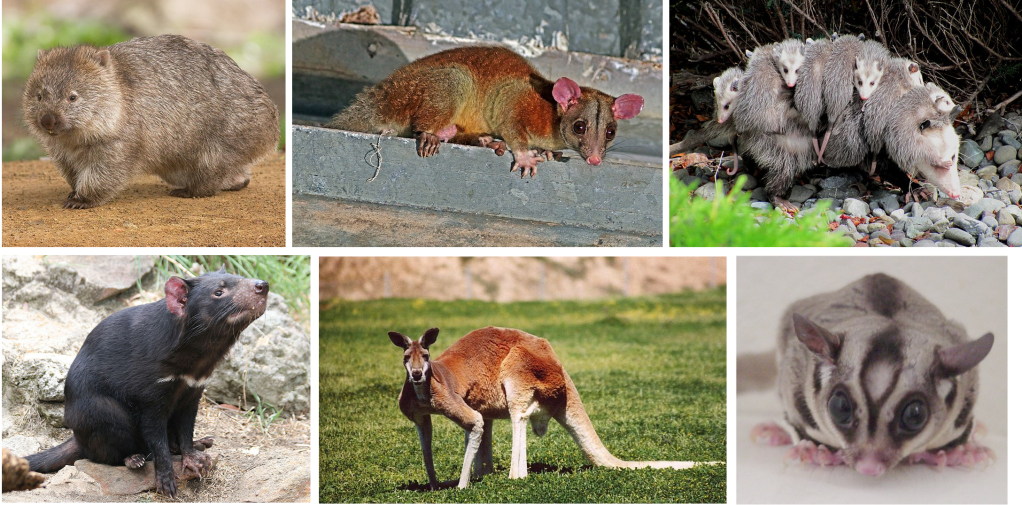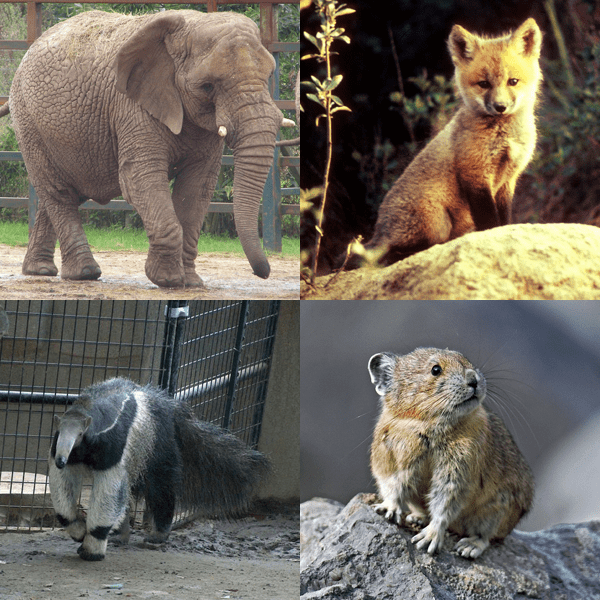Placental Mammals and Marsupials Study Guide
Introduction:
Marsupials are mammals that nurture their young in an external pouch on the front or underside of its body. On the other hand, a placental mammal is a mammal that completes embryo development inside the mother and is sustained by the placenta.
Marsupial mammals:
- The baby’s premature delivery and ongoing growth distinguish this mammalian group while linked to the mother’s lower belly nipples. The pouch, or marsupium, is a flap of skin that covers the nipples and gives the group its name.
- It is not a universal characteristic, despite its prevalence in numerous species. The nipples of some animals are completely exposed or are only restricted by the remains of a pouch.
- The young stay securely connected to the milk-giving teats for a duration roughly equivalent to the latter stages of development of a fetus in a placental mammal’s womb (eutherian).
- Babies born to marsupial mammals are not fully mature.
- The most well-known marsupial mammals include koalas, kangaroos, wallabies, and opossums.
- Nowadays, marsupial mammals are predominantly found in Australia, New Guinea, and South America. In North America, the opossum is the sole marsupial animal.
- At any given moment, opossums can have up to twenty-one babies. In the mother’s pouch, however, there are only thirteen nipples, and only the first thirteen infants who crawl into her pouch and latch on to her nipples survive.
- The structure of a marsupial animal is intimately linked to the niches that marsupials occupy. Burrowing animals with robust foreclaws, such as marsupial moles and wombats, may dig into the earth for food and shelter.
- Kangaroos and wallabies, for example, have well-developed hind limbs that serve as powerful weapons and catapults for bounding across the plains.
- Gliders have a membrane linked to their forelegs and hind legs that allows them to glide down from a high perch.
- Marsupials’ diets are as diverse as the niches they occupy. Many dasyurids eat insects and other tiny animals as their primary food.
- The red kangaroo (Macropus Rufus) is the world’s biggest living marsupial, with males reaching 2 meters in height, 3 meters from nose to tail tip, and weighing up to 90 kilograms.
- Planigales (marsupial mice) are the tiniest, with the long-tailed planigale (Planigale Ingram) measuring just 12 cm in total length. The majority of marsupials are between a squirrel and a medium-sized dog.
Placental mammals:
- A placental mammal animal grows inside its mother’s body until its bodily systems are capable of functioning independently.
- The placenta, a vascular organ found in pregnant female animals that transports materials between the mother and the growing infant, inspired the name of this category.
- Blood carries food and oxygen from the mother to the infant through the placenta. Wastes are passed from the Newborn to the mother, who then eliminates them.
- Humans are placental animals, as are the majority of mammals.
- The genuine placenta of placentals allows for a longer developmental time within the womb’s protection, which is thought to have contributed to the group’s evolutionary success.
- According to fossil evidence, the earliest placental animals emerged between 163 million and 157 million years ago during the Jurassic Period (201.3 million to about 145 million years ago).
Comparison of marsupials and placental mammals:
- The morphological and behavioral similarities between placental mammals and marsupials are often startling. Convergent evolution, or the tendency for species to adapt in comparable ways to similar surroundings, is one example of such resemblances. As a result, marsupials that resemble moles, shrews, squirrels, mice, dogs, and hyenas exist. Others are the ecological equivalents of cats and rabbits, similar in behavior but not in anatomy.
- Because of their simpler brains, marsupial animals are far less intellectual than placentals.
- The brain of marsupials differs significantly in form and mass from placentals. The corpus callosum, a component of the placental brain that links the two cerebral hemispheres, is missing. The brain of a marsupial is likewise smaller than its bodily size.
- Their vocalization is less varied and restricted than that of placentals. Male koalas’ rutting roars, which sound vicious, are a striking and unexpected exception.
- Apart from short-lived pair connections during mating, most marsupials appear to have no lasting social organization.
Conclusion:
- A marsupial is a mammal that nurtures its young in an external pouch on the front or underside of its body.
- Babies born to marsupial animals are not fully mature.
- On the other hand, a placental is a mammal that completes embryo development inside the mother and is sustained by the placenta.
- A placental animal grows inside its mother’s body until its bodily systems are capable of functioning independently.
- More than 100 million years ago, marsupials and placental mammals split from a shared ancestor and had developed independently ever since. Convergence is the name given to this common evolutionary process.
FAQs:
1. Did placental mammals evolved from marsupials?
More than 100 million years ago, marsupials and placental mammals split from a shared ancestor and had developed independently ever since. Convergence is the name given to this common evolutionary process.
2. Are marsupials non placental mammals?
Monotremes and marsupials are non-placental mammals, which means the young do not have a placenta to connect to the mother. Marsupials carry their offspring in a pouch until they reach adulthood. Monotremes are the most basic mammal species, with offspring hatching from eggs.
3. when did placental and marsupial mammals split?
Juramaia (placental mammals that certainly originated after placentals and marsupials separated) and other early cousins of placental mammals were around more than 150 million years ago. Both pieces of data aligned, indicating a placental/marsupial divide between 160 and 180 million years ago.
4. How are placental and marsupial mammals different?
A marsupial is a mammal that nurtures its young in an external pouch on the front or underside of its body. On the other hand, a placental is a mammal that completes embryo development inside the mother and is sustained by the placenta.
5. Which animals evolved first — marsupial or placental?
About 130 million years ago, marsupials appeared, and they ate insects and worms and were quite little. About 110 million years ago, placental animals developed.
6. Did mammals evolve from amphibians?
At least 300 million years ago, reptiles descended from an amphibian predecessor. Both mammals and birds have reptile-like forebears. Approximately 200 million years ago, the first mammals arose, and the first birds about 150 million years ago.
We hope you enjoyed studying this lesson and learned something cool about Placental Mammals and Marsupials! Join our Discord community to get any questions you may have answered and to engage with other students just like you! Don’t forget to download our App to experience our fun, VR classrooms – we promise, it makes studying much more fun! 😎
Sources:
- Placental Mammals. https://flexbooks.ck12.org/cbook/ck-12-biology-flexbook-2.0/section/12.28/primary/lesson/placental-mammals-bio/. Accessed 6 Dec, 2021.
- Marsupials. https://flexbooks.ck12.org/cbook/ck-12-biology-flexbook-2.0/section/12.29/primary/lesson/marsupials-bio/. Accessed 6 Dec, 2021.
- PLACENTAL MAMMALS AND THEIR MARSUPIAL COUNTERPARTS. https://www.scienceworld.ca/stories/placental-mammals-and-their-marsupial-counterparts/. Accessed 6 Dec, 2021.
- Reproduction: What is a placental mammal anyway?. https://elifesciences.org/articles/30994. Accessed 6 Dec, 2021.


